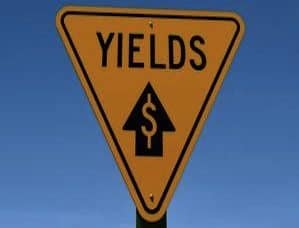
While a group of individual issues could present a high-yield allocation solution for sophisticated investors with credit analysis expertise and comfort with the potential perils involved, my advice for most investors remains to allocate through a pooled product such as an ETF or CEF (closed-end fund). Though you will see a portion of your money eaten up through ongoing management fees, I feel the instant diversification presented by a bond fund is a small price to pay for the potential disaster that a highly concentrated individual issue portfolio might represent in a recessionary climate or random increase in defaults.
If you have $100,000 to invest towards junk bonds and think that 10 positions with $10,000 in each is adequate diversification, I’d think again. With hundreds of holdings, ETFs and CEFs represent a more sensible solution for investors without the time or inclination to independently research the junk space.
Options
I see basically three sound options for high-yield investors looking at the breadth of pooled products traded on market exchanges. Broken down they are:
- Liquid ETFs like HYG and JNK
- A closed-end fund trading at a discount to net asset value
- A defined maturity ETF from Guggenheim maturing in an appropriate year
The “best” way to play high-yield is somewhat in the eye of the beholder. HYG and JNK are very similar vehicles with yields in the 6% range, blended credit in the low BB – high B range, and around 4 year duration. Closed-end funds vary widely in composition with yields anywhere between 7 and 11 percent, variable duration, and most with added leverage, which boosts yield, but can also boost the risk proposition of the vehicle. The Guggenheim Funds seem to lag a bit on the yield front, but seem to possess similar credit profiles to that of both HYG and JNK.
From a capital preservation perspective, despite a somewhat unpredictable level of return which I discussed in a previous article on the Guggenheim ETFs, a defined maturity product makes a lot of sense. In a rising rate environment which is a very real risk today, even funds with limited duration like HYG and JNK pose capital peril, whereas a defined maturity product provides more capital return clarity.
In the end, I suppose the decision on which type of product to utilize comes down to personal preference, risk tolerance, and a personal take on the forward macroeconomic environment. If you think both interest and default rates stay low, then perhaps an aggressive closed-end fund with leverage makes sense. If you are inclined to think that rates start to trend higher over the next 12-18 months, then the defined maturity angle might present the best solution. For others without a definitive take, HYG and JNK, which are widely considered to be all-weather high-yield products, might be a good middle-of-the-road, liquid alternative.
Whichever route you choose, bear in mind that despite the relative near-term, innocuous risk profile, there is a reason that high-yield bonds bear the “junk” moniker. So while investors continue to receive their junk coupons, don’t fall prey to the blase attitude that nothing bad can happen to high-yield bonds.
About the author:

Trusted & Regulated Stock & CFD Brokers
What we like
- 0% Fees on Stocks
- 5000+ Stocks, ETFs and other Markets
- Accepts Paypal Deposits
Min Deposit
$200
Charge per Trade
Zero Commission on real stocks
64 traders signed up today
Visit Now67% of retail investor accounts lose money when trading CFDs with this provider. You should consider whether you can afford to take the high risk of losing your money.
Available Assets
- Total Number of Stocks & Shares5000+
- US Stocks
- German Stocks
- UK Stocks
- European
- ETF Stocks
- IPO
- Funds
- Bonds
- Options
- Futures
- CFDs
- Crypto
Charge per Trade
- FTSE 100 Zero Commission
- NASDAQ Zero Commission
- DAX Zero Commission
- Facebook Zero Commission
- Alphabet Zero Commission
- Tesla Zero Commission
- Apple Zero Commission
- Microsoft Zero Commission
Deposit Method
- Wire Transfer
- Credit Cards
- Bank Account
- Paypall
- Skrill
- Neteller
What we like
- Sign up today and get $5 free
- Fractals Available
- Paypal Available
Min Deposit
$0
Charge per Trade
$1 to $9 PCM
Visit Now
Investing in financial markets carries risk, you have the potential to lose your total investment.
Available Assets
- Total Number of Shares999
- US Stocks
- German Stocks
- UK Stocks
- European Stocks
- EFTs
- IPOs
- Funds
- Bonds
- Options
- Futures
- CFDs
- Crypto
Charge per Trade
- FTSE 100 $1 - $9 per month
- NASDAQ $1 - $9 per month
- DAX $1 - $9 per month
- Facebook $1 - $9 per month
- Alphabet $1 - $9 per month
- Telsa $1 - $9 per month
- Apple $1 - $9 per month
- Microsoft $1 - $9 per month
Deposit Method
- Wire Transfer
- Credit Cards
- Bank Account



